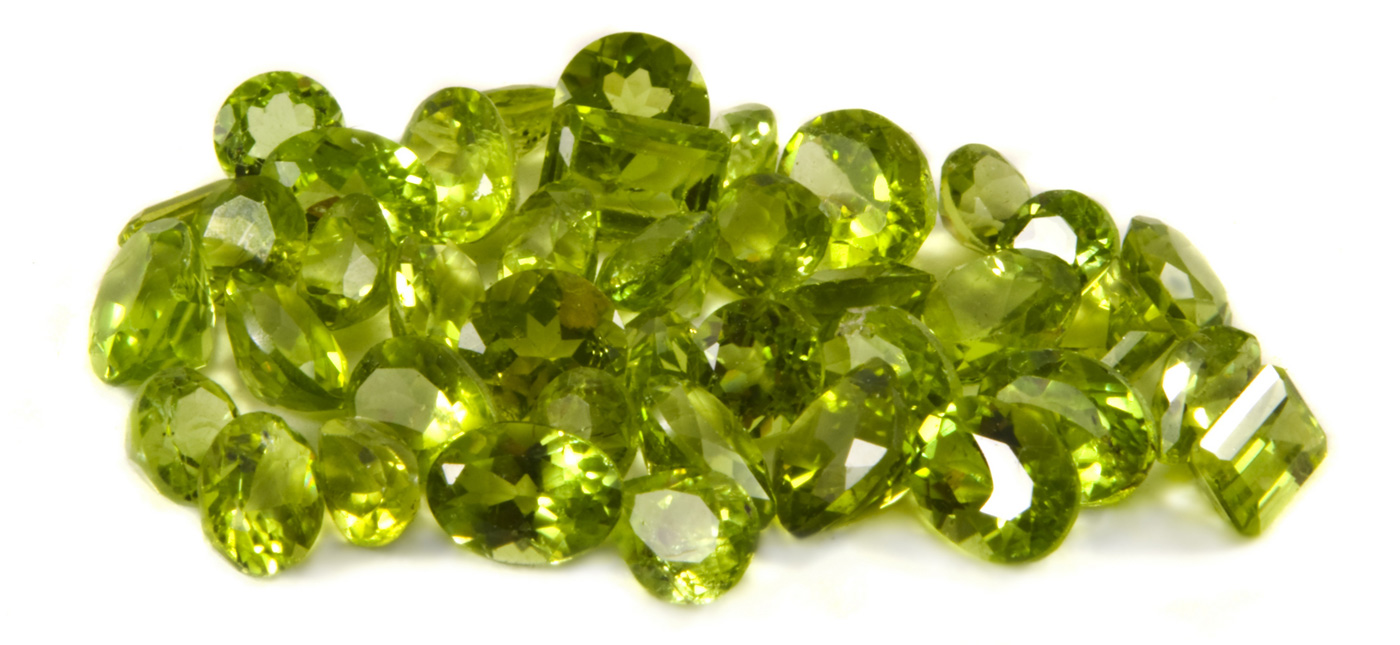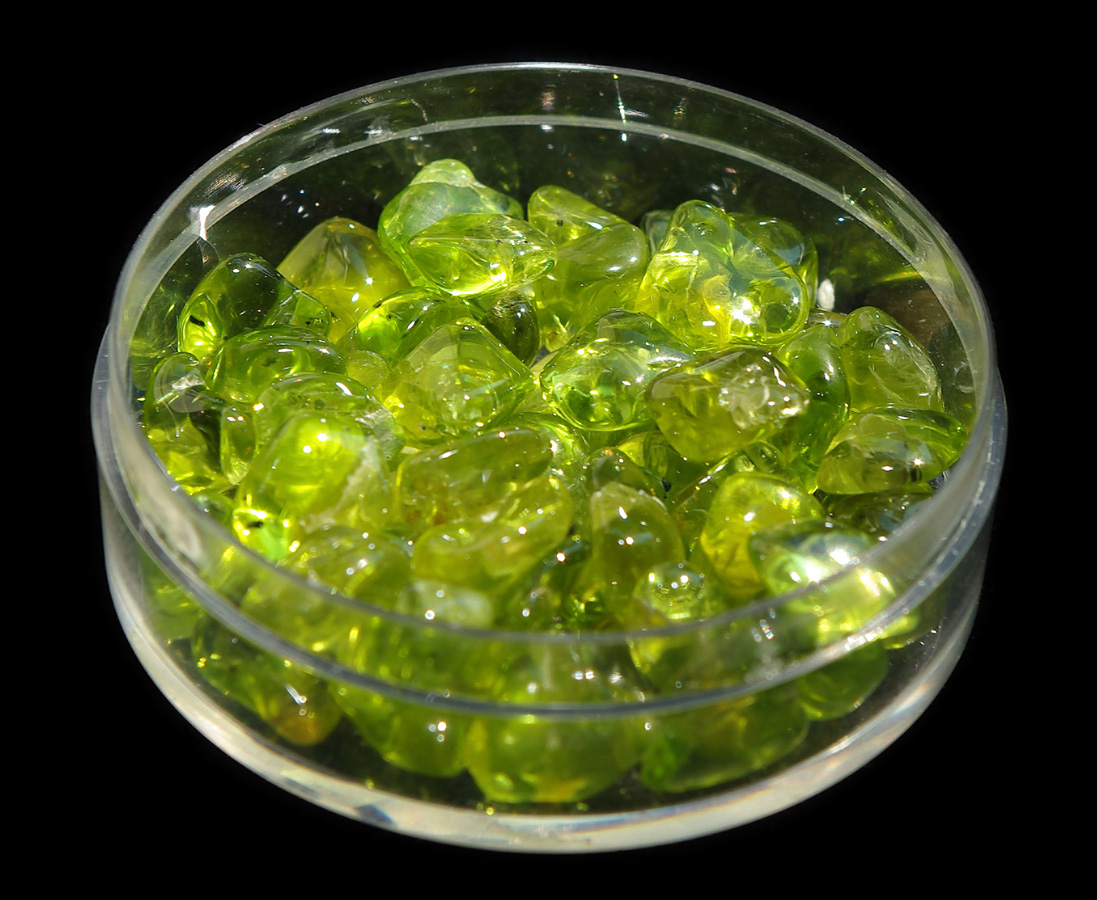Cause of Color : Iron – due to ferrous iron (ideally 12% – 15%). Presence of chromium gives a brighter green.
Chemical Composition : Silicate of magnesium and iron where iron is generally 12% – 15%, Cr, Mn & Ni may also be present. (MgFe)2SiO4
Classification / Type : Mineralogically known as Olivine, peridot belongs to the isomorphous Forsterite (Mg) – Fayalite (Fe) series.
Crystal System / Forms : Orthorhombic System / Striated prisms, rolled pebbles, crystals are rare.
Cuts & Uses : Facetted cut, cabochon, beads, carvings, etc.
Dispersion : 0.020
Hardness : 6.5 - 7 (Fayalite - Forsterite)
Lustre : Oily to vitreous.
Magnification : Lily pad inclusions are halos with a crystal (chromite or chrome spinel) at the centre, glass balls that look like bubbles (Hawaiian), rectangular biotite crystals, doubling.
Optic Character : Anisotropic, D.R.; Biaxial positive.
Pleochroism : Weak
Refractive Index / Birefringence : 1.654 – 1.690 / 0.036. Range: 1.640 – 1.700
Simulants (with separation tests) : Sinhalite (pleochroism, spectrum), Diopside (R.I., spectrum), Tourmaline (optic figure, R.I., S.G., pleochroism), Apatite (R.I., birefringence, inclusions, spectrum), Fluorite (optic character), Glass (optic character), Synthetic Spinel Triplet (optic character, inclusions)
Sources : Hawaii, Zeberged (Egypt), Isle of St. John, Myanmar, Pakistan, Norway, Kenya, U.S.A. (California, New Mexico and Arizona).
Specific Tests :
- Doubling is seen.
- Brittle stone.
- Attacked by acids.
Spectrum : Bands at 493nm, 473nm & 453nm.





























Leave a Reply
You must be logged in to post a comment.